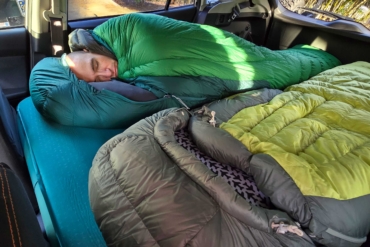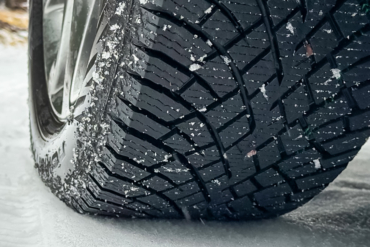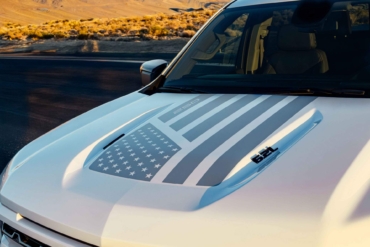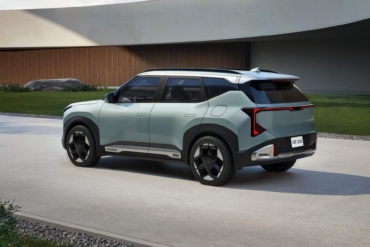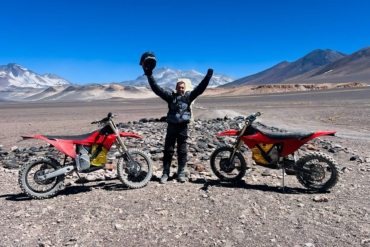The Garmin Tread brings everything users love about off-grid navigation and communication into a single device. That’s great for some, but not all.
Most people use GPS in some way, shape, or form these days, especially when traveling. There are many GPS choices, from the ubiquitous Google Maps to subscription-based mobile apps like onX Offroad, and standalone units like those from Garmin.
Speaking of, Garmin is a well-known name in the GPS industry and was — and arguably still is — one of the most used pieces of standalone GPS hardware around. But with nearly every mobile phone coming with some sort of mapping app, why would people still choose a standalone unit?
Garmin is doubling down on the fact that travelers, overlanders, and off-roaders are going to buy the latest generation of its off-road GPS units, this time called Tread Overland Edition.
The first version, simply called the Overlander, had a 7-inch display, preloaded on- and off-road maps, and the ability to pair with a separate Garmin inReach satellite communicator. The new Tread Overland Edition — comes in multiple sizes, has different features and, most importantly, has an inReach built-in.
The fact that the Tread has the integrated inReach means there’s no need to pair a separate satellite device. And like a standalone inReach, the Tread has the all-important SOS button built in for emergencies, too. Like any other inReach, you’ll need a subscription for its satellite services.
But for those who venture into the backcountry without cell service, an inReach can literally be a lifesaver.
Garmin Tread Overland Edition GPS

Why a Standalone GPS?
With today’s vast array of mobile mapping apps, we wanted to know why someone would opt for this unit versus just using a smartphone, so we reached out to Garmin for comment.

“The hardware is the big differentiator,” Garmin’s senior product manager, Don Schmidt, said. “Unlike smartphones, Tread devices are purpose-built for rugged, off-road use. They can handle weather, dust, and hot temperatures. They also ship with a secure locking magnetic-assisted mount to secure inside your vehicle.”
Schmidt told us the Tread is loaded with private landowner info, public lands, iOverlander points of interest, a database of campgrounds, and more. And it uses turn-by-turn trail navigation using OpenStreetMap (OSM) and USFS Motor Vehicle Use Maps.
Perhaps most interesting, the Tread provides custom routing based on the size and weight of your truck when you are on the road. In addition to a downloadable bird’s-eye satellite imagery that shows the driver high-resolution overhead views of the map, this helps give a better sense of the area they are navigating through.
Multiple Sizes, Lots of Features
Unlike the previous Garmin Overlander, the Tread is available in three sizes: 5.5-inch, 8-inch, and 10-inch Tread XL versions. The smaller unit is a play for powersports (UTV) customers.
Our sample unit was the 8-inch version. The glossy screen has great contrast and crisp, clean graphics. Those familiar with Garmin GPS interfaces will be equally familiar with its UX.
Unlike the past Overlander, this one does not have voice recognition. It will, however, do things like link up to your phone for calls or even play music via Bluetooth connection.
The unit itself is IP67 water-resistant, so you won’t have to worry too much about getting it wet or dusty if you were in an open-top vehicle such as a UTV, Jeep, or similar.
Big, Bright Display
Power up the Tread (the rear-facing power button can be tricky to find) and you’re greeted by a brilliant screen. Basic on-screen displays include speed, a variety of timekeeping metrics, and a ton of optional displays which include things like elevation — a feature I very much liked.

My JDM (Japanese domestic market) Mitsubishi Delica 4WD van’s speedometer is in kilometers, so having a speedometer on the Tread in miles per hour was helpful. I also very much appreciated the elevation display, which shows a 30-mile cross-section of the road’s ups and downs.
This allowed me to plan for slower ascents and faster declines — something important in a slow, diesel-powered van.

Other fun bits include pitch/roll (inclinometer), available bird’s-eye view maps (downloadable), and the ability to pair this using the Tread app on your smartphone.
This app offers a host of features, but my favorite is the weather radar overlay. When the phone is paired to the Tread Overland Edition, it will overlay weather radar info over your route, letting you see where storms are in relation to your travels.
This can be very useful when driving through or toward an impending snowstorm or severe weather event.
Still a Learning Curve
There is a learning curve to the unit, even if you’re familiar with Garmin software.
First, you can tell the Tread how capable your vehicle is, and it will allow you to choose a variety of difficulties in which route you choose. Even if you say your rig isn’t that capable, it will provide you with a standard road route option, or a more scenic route. The more capable your rig, the more interesting and dirt-centric your route might become.
Of course, the easy way is typically the fastest — think interstate travel. But should you choose the faster, more scenic route, you might enjoy the unit’s suggestions, as it may very well be on a host of off-road trails. It took us a while to figure out that you have to choose between the direct or adventure routes, however.

I tested both route options on a recent trip to Arizona from Oregon for Overland Expo West. While in Northern California, we utilized the Tread’s off-road trail map layers.
Sure enough, it’d showcase off-pavement routes with green dashes. We’d go past trailheads and primitive routes, and even took a few of them.
Nearly every route we wanted to venture down was present. They stopped and started just where Garmin said they would. As a fan of not taking the beaten path, I found the routes I chose to be accurate, which leads to peace of mind.
There were a couple of times when it did want to lead us down some trails that I didn’t feel comfortable navigating. In which case, the GPS would reroute us accordingly.
Hardware Gripes
Despite this being the latest and greatest product iteration, there are still some gripes. First off, the Tread has a dedicated 12V cigarette lighter power cord instead of a USB cord.
Perhaps it just needs extra juice, but if you only have one 12V socket, Tread will monopolize it. If they could simply power it off of a USB port, that’d be more welcome.

The Tread can be cordlessly used until the battery runs out, which we found to be about 2 hours and 5 minutes. Unfortunately, the unit will shut its screen off after about 30 minutes while on battery power. We couldn’t find a way to override this.
Our van only has one 12V outlet, so we’d have to swap between the Tread and our USB adaptor for a laptop and phone charger when working on the go. But the idea that it shuts off regularly was annoying.
It’s also not the fastest of chargers. We noted that after 25 minutes of charging, it was only 11% full.
The high-gloss screen looks great. However, you pay for that in reflectivity. Sometimes it can be hard to see the screen if the sun is in the wrong place.
Finally, it can be challenging to find the power button on the back of the Tread when mounted to the windshield. And when it’s shutting off every 30 minutes, you’ll need to find it. Oh, and the corded connection has a screw-on pigtail connector that was cumbersome to use.
With that being said, the unit does feel substantial, stout, and very well put together. The suction-cup mount is also very stout and a vast improvement over the previous Overlander, as it was prone to regularly falling off the windshield.
Big Features With a Big Price
The Garmin Tread Overlander with the 8-inch screen retails for $1,299.
However, that also includes a built-in inReach. An Elite subscription to onX Maps is $99 a year — that’s 13 years of subscriptions compared to the Garmin Tread.
Granted, you don’t get the satellite functionality. You’re also not getting any hardware, and you’re having to rely on your smart device, which is also doing about a hundred other things.

There’s no arguing about the fact that the Tread is far more full-featured than Google Maps or Gaia, but you’re dealing with nontransferable technology. In other words, if the hardware wears out, you may have to get an entirely new device.
With mapping apps, you can upgrade to the latest smartphone, and you’ll still have your mapping apps. I’m certain there are firmware updates for the Tread, however.
Garmin Tread: Great for Some, Not for Everyone
Garmin did a good job improving over the previous Overlander model GPS. It made the mount better. It made the maps better. And, the interface is pretty good. However, the combination of large size and the big price tag will likely keep many from buying.
Plus, most people already have a smart device — phone or tablet. The idea that satellite communication is already embedded, however, is a nice touch. For those of us with inaccurate speedometers, I love not having to rely on my GPS speedometer on my phone and just using the Tread device.
Like with many gadgets, some people will get it, and some won’t. I like the Tread and use it frequently. However, others may not want to have yet another digital piece of gadgetry in their arsenal. Either way, the Tread is much improved, and might just be ready to come with you on your next adventure.


